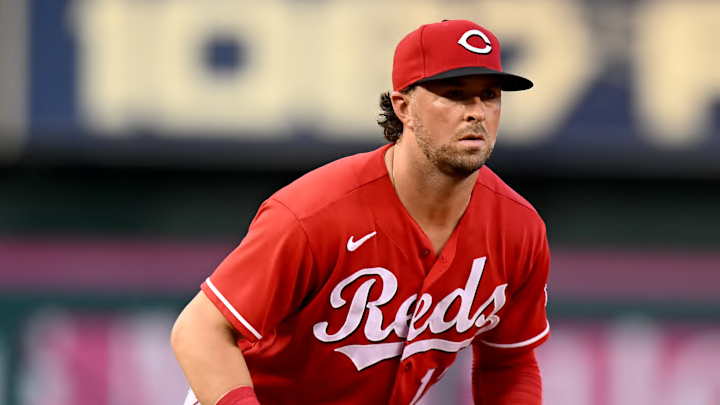In November of 2022, the Cincinnati Reds traded one of their fan favorites to the Minnesota Twins. Shortstop Kyle Farmer was shipped to the Twin Cities in exchange for right-handed pitcher Casey Legumina.
The trade was met with some mixed emotions at the time. Farmer, who played a majority of his games at shortstop, finished his four-year tenure with the Reds at third base.
With Farmer switching to third after last year's trade deadline, Jose Barrero took over as the everyday shortstop. As we reminisce about the trade, it certainly was the start of some much bigger and better things. The new Reds infield that we currently see wouldn't be possible without moving on Farmer.
Trading Kyle Farmer helped allow the Reds young infielders to flourish
The Cincinnati Reds management wanted to allocate more playing time to a lot of the young infielders coming up through the team's farm system. Matt McLain, who's currently on the IL, was the first player called up this season and appears to have a starting job locked up moving into the future.
Spencer Steer was already on the roster, but the Reds also added the likes of Elly De La Cruz, Christian Encarnacion-Strand, and Noelvi Marte as well. Trading Kyle Farmer, while rather unpopular at the time, opened up a lot of playing time for these young Reds infielders.
The time allocated to the likes of McLain, De La Cruz, Marte, and Steer has changed the Reds as we know them and even put the Reds back into the playoff hunt.
The Cincinnati Reds infield as we know it now consists of one of its biggest strengths, both offensively and defensively. Obviously, while it wasn't an easy pill for Reds Country to swallow, trading Kyle Farmer became the catalyst that enabled this new Reds infield to absolutely flourish.
